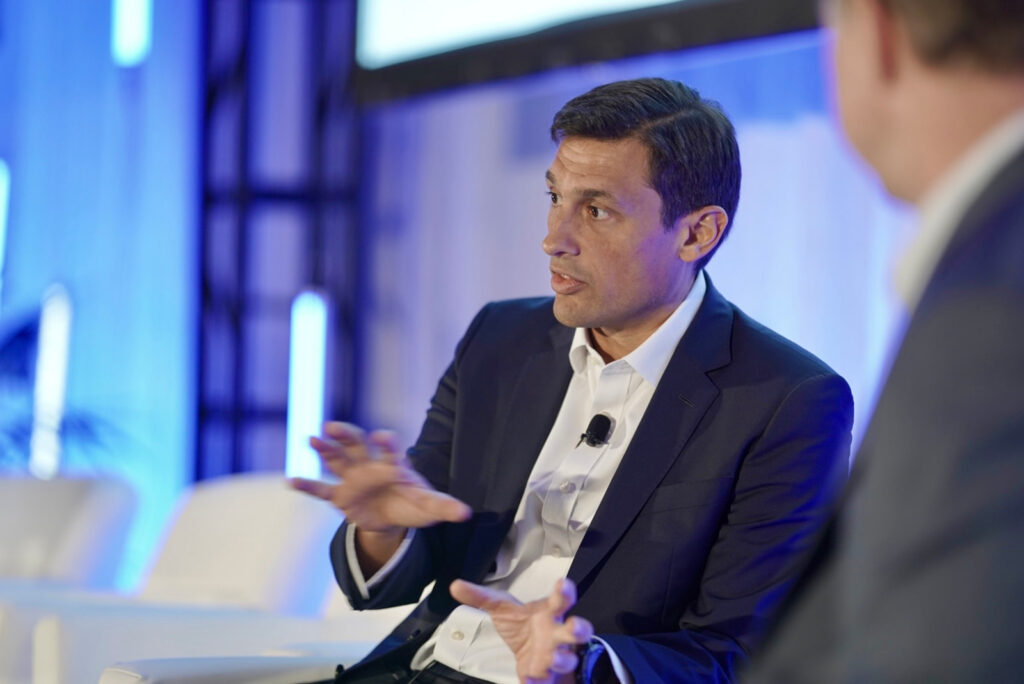The critical role that portfolio trading plays in concentrated risk was laid bare in a discussion between Sanjay Jhamna, global head of credit trading at JP Morgan and Chris Bruner, chief product officer at Tradeweb, speaking at the Fixed Income Leaders Summit in Boston.

“Nobody manufactures liquidity, it is provided and taken as a transfer,” said Jhamna.
The growth of exchange traded funds, had materially contributed to the rise of portfolio trading as a protocol, which in turn has seen it rise to 8% of average daily volume on a normal month, from 1-2% five years ago.
“How did we get to this point?” he asked. “First was the connection of portfolio trading to the ETF liquidity channel. That means a portfolio looks like an ETF, it gets hedges with those ETFs and then gets exhausted through the ETF create redeem channel and any residual remains need to be worked through using more conventional liquidity channels.”
That has effects, he noted which lead to a demand for more automated low touch trading.
“As that scales up, gross balance sheet increase on the side of the liquidity provider,” he said. “Traditionally risk management was about bottom up, understanding idiosyncratic risk and working through those line by line and suddenly you need to look at risk management from top down.”
Firms therefore need to use sue automated ways to deal with those residual elements of the trade in order to make the process more efficient, increasing the use of algorithm based trading.
“Algo has become more than pricing – for example holding period estimation, liquidity, toxicity, and other concepts,” observed Bruner.
“That is the third iteration of this process,” agreed Jhamna. “As these parts have connected it has become a precision game.”
Bruner noted that portfolio trading had been described as skewed towards certain parts of the market.
“As a platform we are trying to normalise this, and bring it to the whole marketplace, but how can client think about everything that JP Morgan offers in terms of best execution?” he asked.
Jhamna said, “For the foreseeable future low touch /no touch execution is there, with greater adoption and more efficiency gains, title pricing and so forth. At the same time the needs that come from concentrated risk transfers are also benefitting from structural trends.”
©Markets Media Europe 2024
©Markets Media Europe 2025













